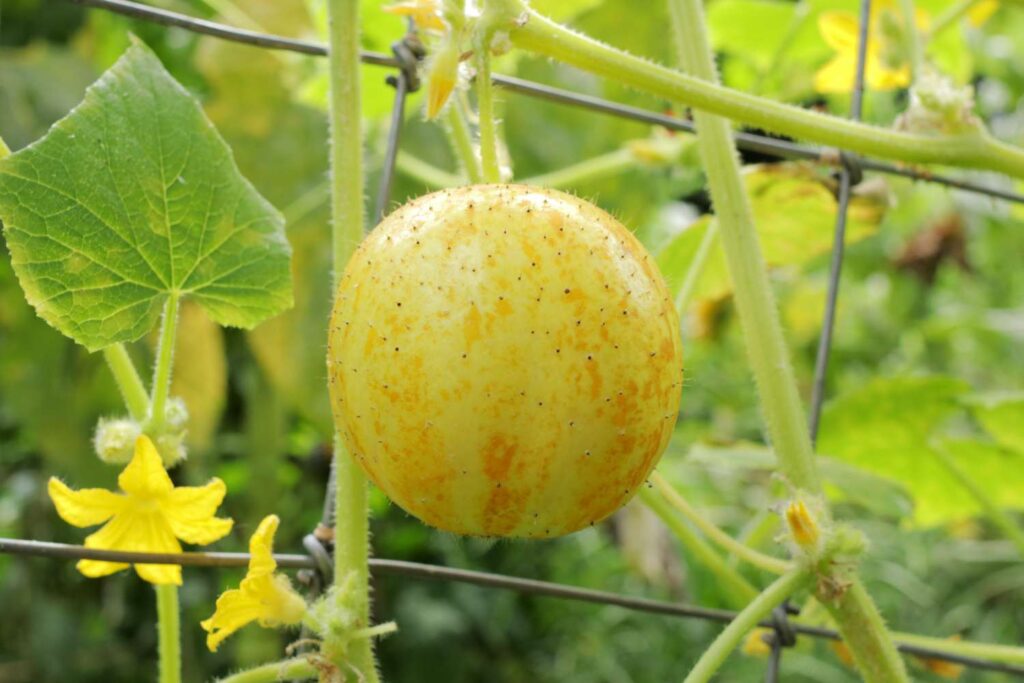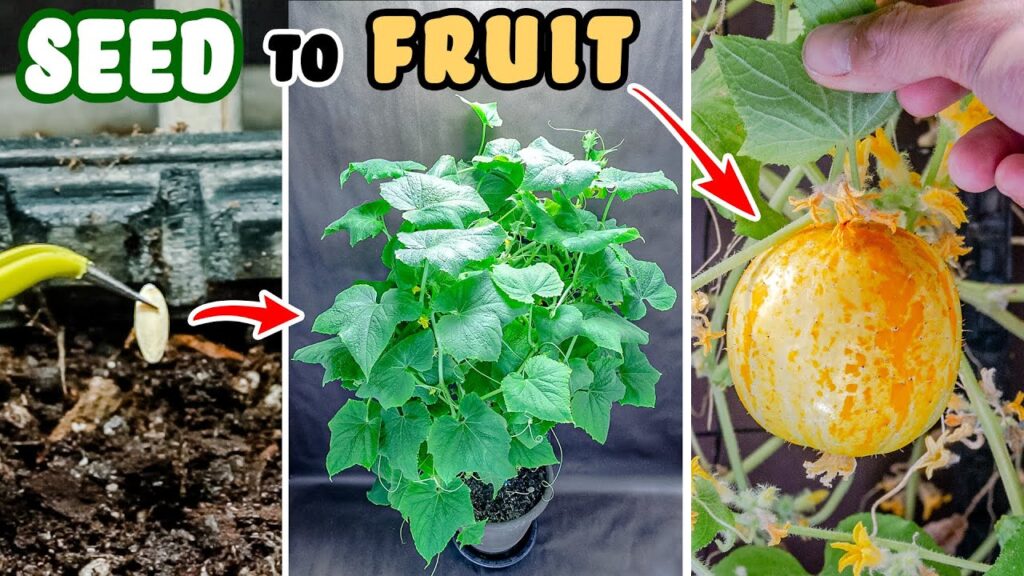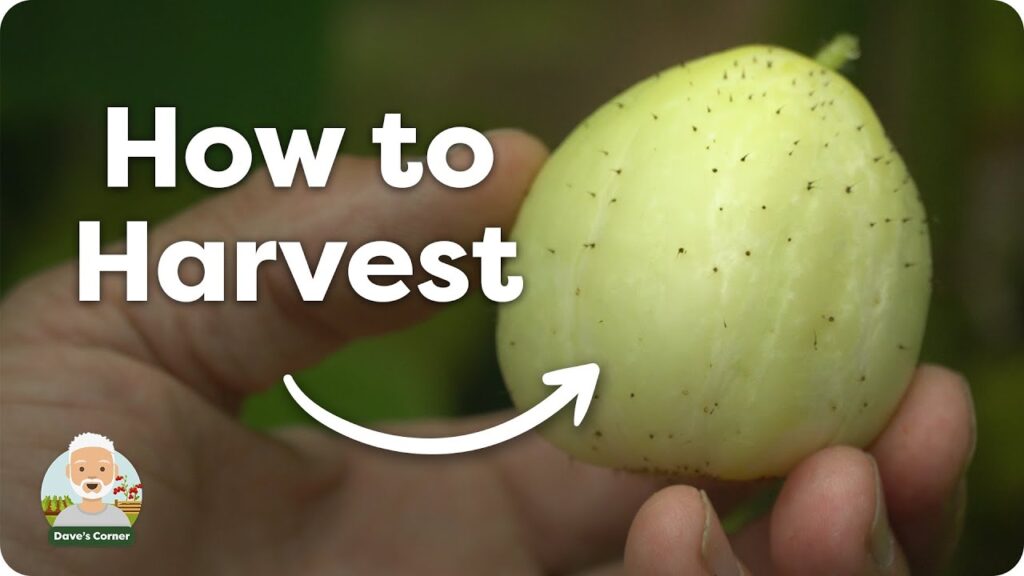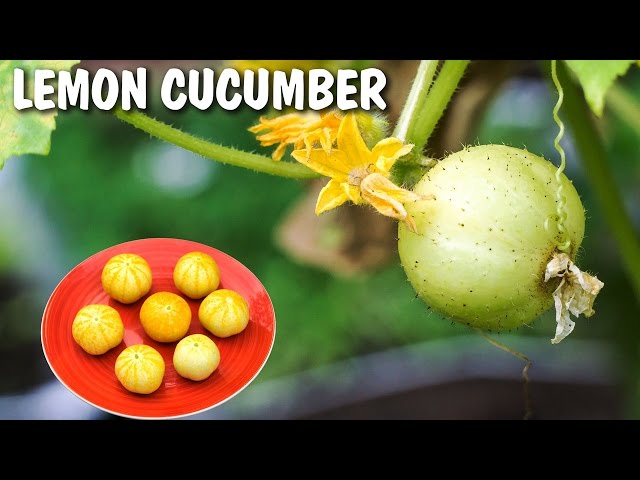Lemon cucumber, also known as ‘Cucumis sativus,’ ‘Lemon’, ‘Apple’, or ‘Crystal Apple’ cucumbers, are a delightful addition to any garden or kitchen. With their unique round shape and lemon-like color, they offer a refreshing twist to traditional cucumbers. In this comprehensive guide, we’ll delve into the history, cultivation, and culinary uses of lemon cucumbers, providing all the information needed to grow and enjoy these vibrant fruits.

History and Origin
Originating from Central Asia, lemon cucumbers have a rich history dating back centuries. They were introduced to the United States in the late 1800s and have since become popular among gardeners for their distinctive flavor and appearance.
Botanical Details
| Attribute | Details |
|---|---|
| Common Name | Lemon Cucumber |
| Botanical Name | Cucumis sativus |
| Flower Color | Yellow |
| Bloom Time | Mid to late summer |
| Fruit Size | 2-3 inches in diameter |
| Plant Height | 3-4 feet |

Planting Lemon Cucumbers
Lemon cucumbers thrive in warm climates and require well-drained soil with plenty of sunlight. Plant them in late spring after the last frost has passed. Sow seeds directly into the soil or start them indoors and transplant seedlings once they have developed sturdy stems. Space plants about 12 inches apart to allow for proper growth.
Watering Tips
Keep the soil consistently moist but not waterlogged. Water deeply once or twice a week, depending on weather conditions. Avoid overhead watering to prevent fungal diseases.
Understanding Plant Stages
Lemon cucumbers go through several distinct stages of growth:
- Germination: Seeds sprout within 7-10 days under optimal conditions.
- Seedling: Seedlings develop their first true leaves and establish root systems.
- Vining: Plants begin to vine and produce lateral branches.
- Flowering: Yellow flowers appear, indicating the onset of fruit production.
- Fruiting: Cucumbers start to develop and grow rapidly.
- Maturity: Cucumbers reach full size and become ready for harvest.
Nurturing Your Lemon Cucumber Plant
Provide support for vines to climb, such as trellises or stakes. Mulch around plants to retain moisture and suppress weeds. Fertilize with a balanced fertilizer every 4-6 weeks to promote healthy growth.
Harvesting Lemon Cucumbers
Harvest lemon cucumbers when they reach full size, typically 2-3 months after planting. Use a sharp knife or scissors to cut the fruit from the vine, taking care not to damage the plant. Harvest regularly to encourage continuous production.

Troubleshooting Common Problems
- Pest Infestation: Control aphids and cucumber beetles with insecticidal soap or neem oil.
- Disease: Prevent powdery mildew and bacterial wilt by spacing plants adequately and practicing good sanitation.
- Environmental Stress: Protect plants from extreme heat or cold by providing shade or covering them with row covers.
Culinary Uses of Lemon Cucumber
Lemon cucumbers are versatile in the kitchen and can be enjoyed in various ways:
- Fresh in Salads: Their mild, slightly sweet flavor makes them perfect for salads and crudité platters.
- Pickling: Preserve their crunchy texture by pickling them with vinegar, dill, and spices.
- Gazpacho: Blend lemon cucumbers with tomatoes, peppers, and herbs to make a refreshing gazpacho soup.
- Salsa: Dice cucumbers and combine with onions, cilantro, and lime juice for a zesty salsa.
Lemon cucumbers add a refreshing twist to culinary creations and are a delightful addition to any meal. Incorporate them into your recipes to experience their unique flavor and versatility firsthand.
